 By Julie Pollard
By Julie Pollard
“When am I going to ever use this?” “Why do I even need to know this?” These questions are the bane of the science teacher’s existence—or at least of mine. Even though science is woven into every aspect of every day of our lives, my middle schoolers just can’t seem to make that leap. They’re like frogs who don’t know how to jump. They still think of science as something done by nerds in white coats in labs.
During our unit on ecosystems and competition, my students seem to struggle with the concept of competition for abiotic factors. They have no problem relating to the predator-and-prey, competition-for-food aspect of competition—which makes sense, if you’ve ever watched eighth grade boys racing for the last slice of pizza.
After much trial, error, and data analysis, I’ve found a way to bring the idea of competition for abiotic factors to life for my students. This is a great activity for the Engage/Explore component of the 5E Lesson structure.
Getting Their Attention
The day before this activity, I show a clip from The Hunger Games where the tributes are all racing to the cornucopia to grab essential supplies. I ask my students to brainstorm some of the things they might need to obtain and classify each item as biotic or abiotic. (Note: At the beginning of the year, my students’ parents sign a form stating whether their child can view clips from PG-13 movies.)
Frog Quarantine!!
Set up for this activity can be as simple or complex as you like. This year, I sent myself a potted plant to be delivered the day before to “set the scenario.”
I left the plant in a conspicuous spot in the classroom, hoping that students would notice it. This was the entry method for our invasive species. (Recognize it? It’s one of those colorful plastic leaping frogs. I call them Flipping Frogs.)
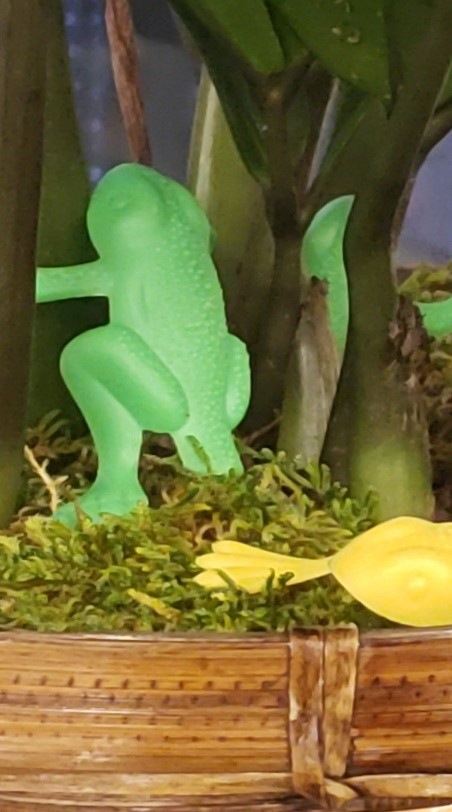
The next day, the students came into this:
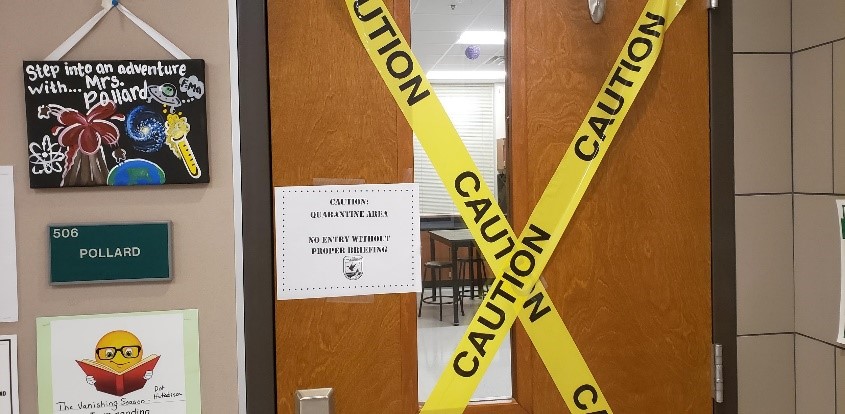
I stand outside my classroom door and calmly explain that an invasive species of frog was discovered hiding in the plant I had received the day before. Our local Fish and Wildlife Services had decided to quarantine the Science Wing to keep the infestation from spreading.
These frogs are an unusual species, I warned students. They emit a toxin that will drop your grade to zero if you step on the same floor tile as a frog. Also, if there is a frog on your seat, you must stand. ANY form of contact with these frogs is dangerous, so you cannot use a pencil to move them or brush them off your seat. You must stand.
Inside the classroom I have taken my Flipping Frogs and divided them into six even bunches, one for each period I teach. Before school starts, I take one portion of the frogs and scatter them across the room. I generally won’t put any on the seats in first period since, after all, the invasion is still in the early stages.
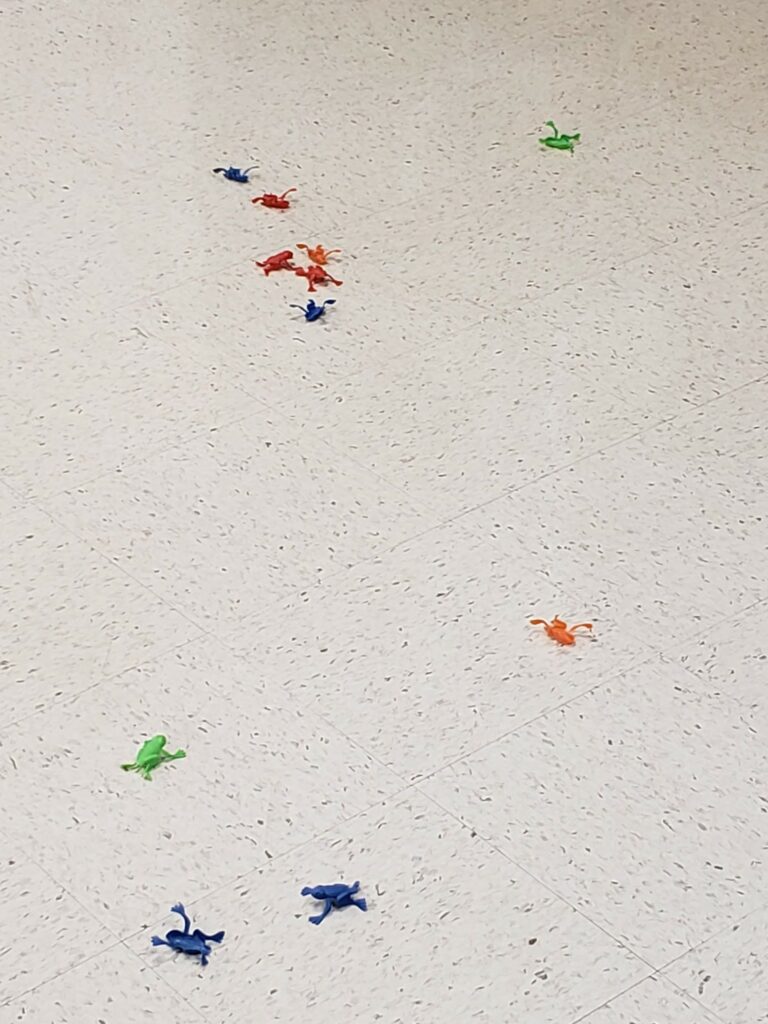
Frogs & Kids, Frantic for Food!
After the kids settle in the classroom and complete their warm-up, I toss some Jolly Ranchers around the room randomly. (You can use counting chips, beads, buttons—anything you like if you don’t want to use candy).
I have allotted two candies for each student in the class.
I explain the rules before allowing students to lunge for the candies:
- When I say “Go!” you will have 30 seconds to find NO MORE THAN two Jolly Ranchers apiece.
- If a piece of candy is in the same square as a frog, it is unavailable.
- Anyone who doesn’t get two candies has been outcompeted by the frogs and… guess what? You’re dead.
Before class, I’ve created a data table on the board (image to come). We add our numbers to the table with the number of frogs and percent of our population of students who “died.”
In the remainder of the period, the students do a quick write explaining how the invasive species impacted our classroom environment, using the vocabulary terms we have learned for this unit. Words like niche, ecosystem, population, community, native species and invasive species, to name a few.
Before the next class arrives, I distribute the next portion of frogs, increasing the population.
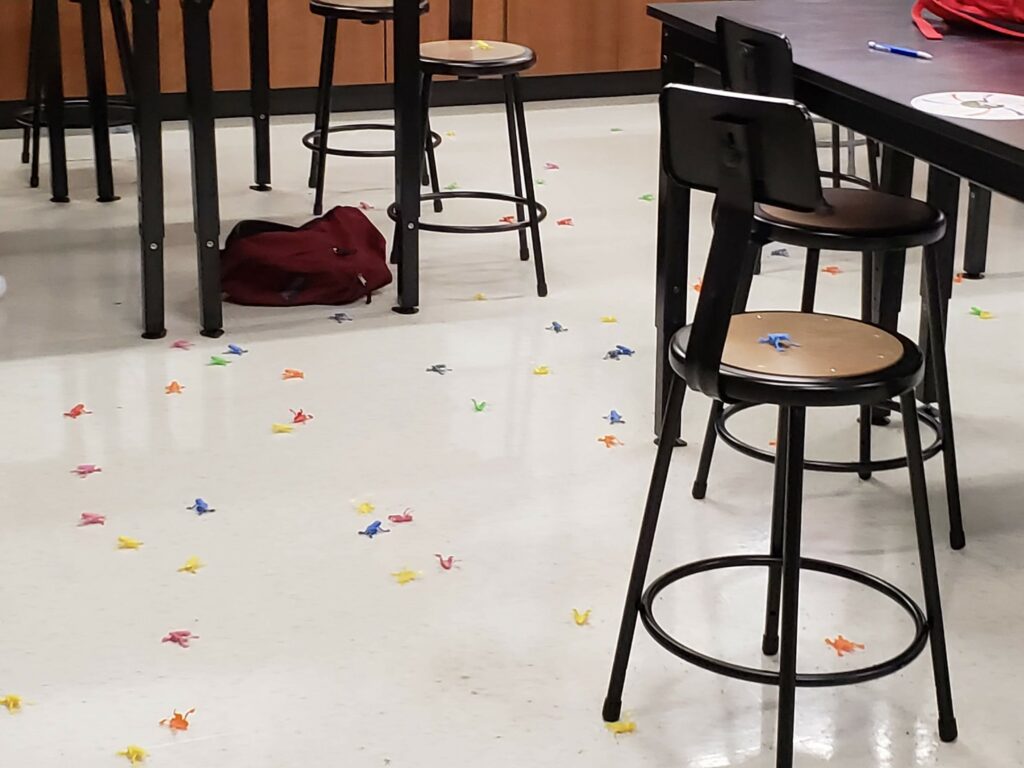
As the day goes on, the number of students who are standing, sitting on a table, hopping or taking huge strides to get to their seats increases. It’s quite a sight! Inevitably, a larger portion of our native population dies off each period.
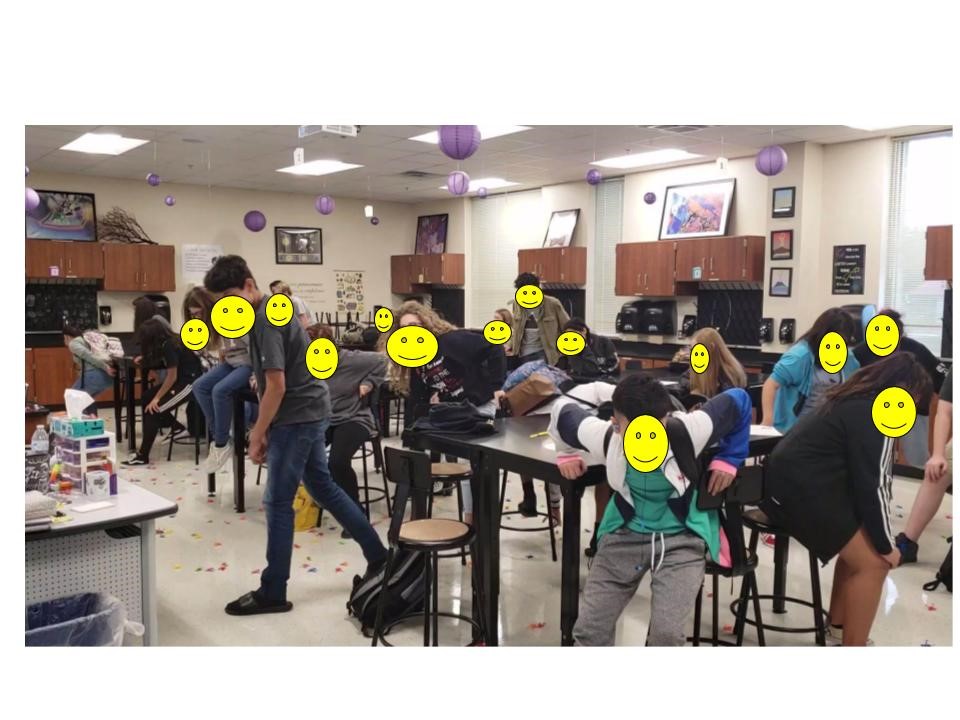
Looking at Outcomes
The next day, we graph and analyze the data and infer what would happen if the population continued to grow.
We also research the real coqui frog and how it has become a source of problems in Hawaii. If you have a twisted sense of humor (like I do), there is a ten-hour loop on YouTube of Coqui Frog sounds that you can play all period.
I can incorporate many of our target skills and objectives in this lesson with the writing and the data graphing and analysis and our results on this standard have improved with implementation of this activity.
Not to mention, it’s just fun!
Educational Innovations has created a ready-to-go “Invasive Species Lab” which is handy if you’d like to use the complete lesson for this activity… and of course, if you’re looking to purchase a whole lot of frogs!


This entry was posted on Friday, February 7th, 2020 at 2:00 pm and is filed under Biology, College level, Earth Science, High School level, life science, Middle School level. You can follow any responses to this entry through the RSS 2.0 feed. You can leave a response, or trackback from your own site.
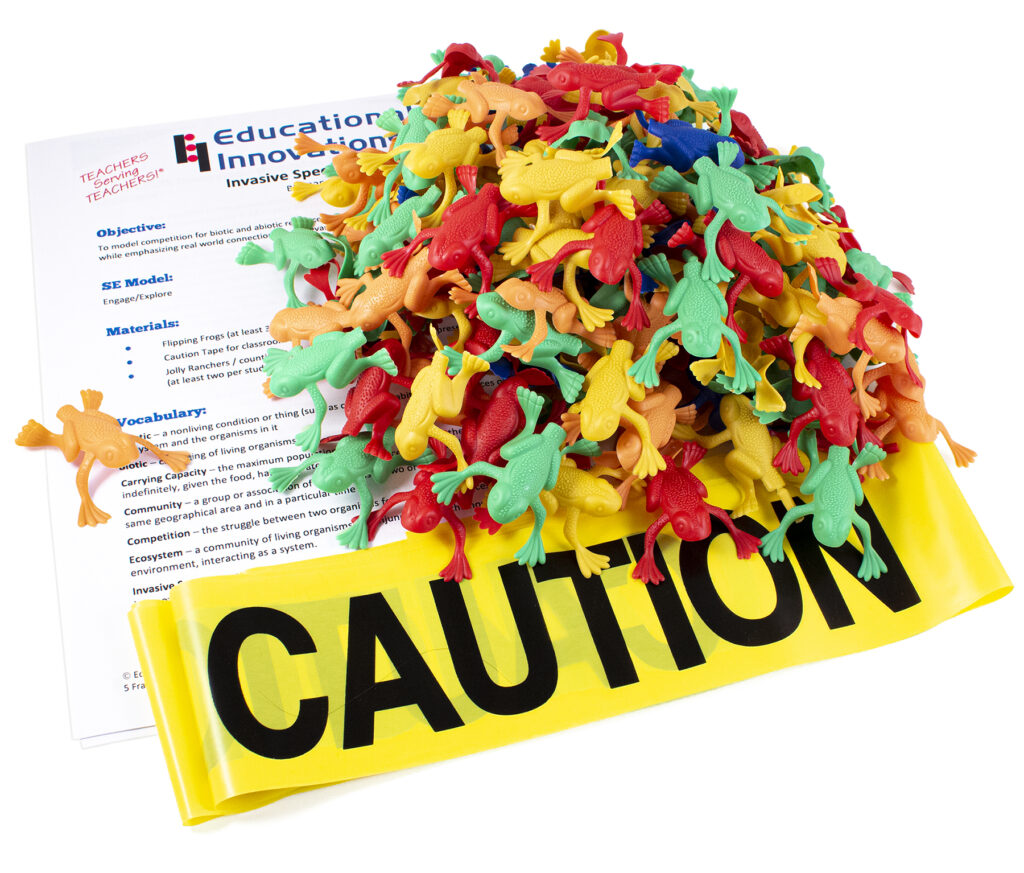
I really like this activity / lab, and would like to do it in my classroom with my 5th grade students, but I don’t have floor tiles. It’s an old building – we have wooden floors. I’ve been brainstorming how to do this without a square grid of tiles on the floor. My ideas so far have been very complicated – does anyone else have any suggestions?
If you have a class set of rulers, you could have each student use one to remain (x) inches or cm away from any frog. This could also turn into a measurement lesson 🙂 Perhaps since your students will take more time foraging for food, you could extend the time a bit from 30 seconds to 45 or 60. I hope that works for you!
~Tami
Educational Innovations
lay down a grid of copy paper
I love this idea as it indeed gets the students involved. I am purchasing and saving – for hopes that we will return to school, but will work to make it an online lesson too by finding a way for it to be used in my house…and then make videos. (Covid-19 – making educators think outside of the box!)
Awesome, thank you for sharing!
Teachers are amazing! We are seeing so much creativity and positive thinking during this very difficult time! We will make it through this and come out stronger. Let us know if we can help in any way.
~Tami
Educational Innovations
How fun! Our textbook has the lamest lab during the ecology chapter. Thank you so much for sharing your idea.
Is there a way to purchase the lesson plan/teacher guide only?
I keep trying to comment on Educational Innovations but my question isn’t showing up. (I can’t remember if I submitted it during the weekend or earlier)
Hello Tabitha. Unfortunately, we do not sell the lesson separately, but you can easily use the blog to plan your lesson.